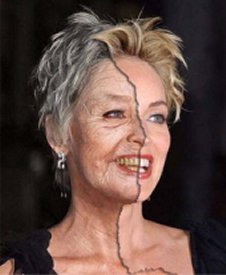What are free radicals?
In simple words, free radicals are atoms or ions that have unpaired electrons and are often denoted by the insertion of a dot (.) (Aruoma 1998). The presence of unpaired electrons makes free radicals extremely unstable and highly reactive.
How do they affect us?
The presence of unpaired electrons makes free radicals extremely unstable and highly reactive. A part of the oxygen that we breathe in is converted to free radicals that react with non-radical biological molecules to generate more free radicals, thereby commencing a chain reaction. Although free radicals are not limited to oxygen, the two most significant free radicals affecting human beings are the oxygen-centered superoxide and hydroxyl radical (Wikipedia 2012).
Free radicals attack the lipid molecules present in the plasma membrane. Lipid molecules are responsible in lending fluidity to the plasma membrane. The highly reactive free radicals steal electrons from the hydrogen attached to the carbon in lipids. This consequently leaves the carbon molecule as a free radical, which will in turn react with other molecules in order to attain stability. In this manner, free radicals disrupt the fluid nature of cell membranes and start a chain reaction. This process is commonly known as lipid peroxidation (Helwig 2000).
Moreover, free radicals can react with the DNA molecules present in the cells by stealing their electrons (Aruoma 1998). Damage to DNA molecules will lead to the disruption of cell cycles and cause mutations that will lead major disorders like cancer, Parkinson’s disease and Alzheimer’s. Also, DNA molecules give rise to proteins by the process of transcription and translation. Hence, damage to DNA molecules will in turn give rise to non-functional protein molecules. Proteins have regulatory, transportation, structural and enzymatic functions in living organism. Therefore, any damage to proteins will significantly disrupt the functioning of living organisms.
Additionally, free radicals are also considered to play an important role in aging. Denham Harman, who devised the free radical theory of aging, states that, over time, the disruption of the fluid nature of the plasma membrane, the damage to DNA molecules and the degradation of proteins gives rise to accumulated chemical changes in human beings. It is these changes that result in us experiencing aging (Harman 1988).
What can we do to protect ourselves against free radicals?
Molecules known as antioxidants are used to counter the effects of free radicals by inhibiting the oxidation of other molecules. They occur naturally in human beings and can also be found in fruits and vegetables (Krishnaiah et al. 2007). However, there are limited measures that can be taken to prevent the damage caused by free radicals.
Neither can we stop breathing in oxygen nor can we stop the generation of oxygen-centered free radicals as byproducts of the metabolic reactions that take place in our bodies. Besides, it is a rule of life that anything in excess is bad. This applies to free radicals as well as antioxidants. Excess amounts of free radicals will cause significant damage and excess amount of antioxidants used to counter the effects of free radicals will end up hindering the effectiveness of treatments.
References
Aruoma, O., 1998. Free Radicals, Oxidative Stress, and Antioxidants in Human Health and Disease. Journal of the American Oil Chemists’ Society, 75: (2), 199-212.
Harman, D., 1988. Free radicals in aging. Molecular and Cellular Biochemistry, 84: 155-161.
Helwig, B., 2000. Antioxidants and Exercise [online]. Available from http://www.exrx.net/Nutrition/Antioxidants/Introduction.html
Krishnaiah, D., Sarbatly, R., and Bono, A., 2007. Phytochemical antioxidants for health and medicine – A move towards nature. Biotechnology and MolecularBiology Review, 1: (4), 97-104.
Wikipedia, 2011. Radical (chemistry) [online]. Available from http://en.wikipedia.org/wiki/Radical_(chemistry)) [Accessed Mar 10th, 2012].



